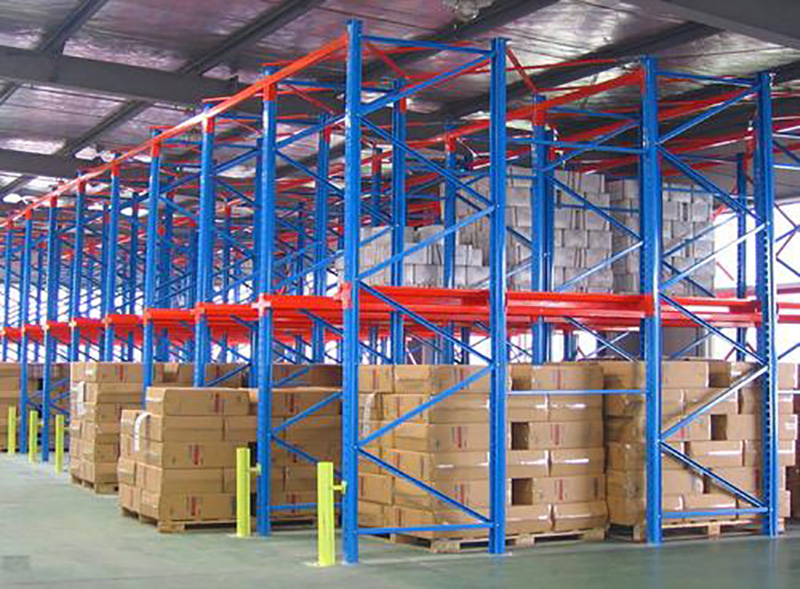Drive-through racking, also known as aisle racking, is known for its continuous, undivided design.
This racking system allows goods to be stored continuously along aisles, creating a smooth access path.
It is particularly suitable for storing lightweight and bulky goods such as furniture and appliances.
The multi-layered design fully utilizes the warehouse height and optimizes storage space.

Drive-in racking, also known as push-in or push-back racking, is designed for storing large quantities of a single variety of goods.
Its unique feature is that goods can be directly loaded and unloaded by forklifts and other handling equipment, significantly improving warehouse space utilization.
However, this type of racking has certain requirements for cargo size and weight, making it more suitable for storing heavier, uniformly sized goods.
1. Structure and Applicability: Drive-through racking features strong continuity and is suitable for lightweight, bulky goods; drive-in racking emphasizes storage density and is suitable for large quantities of single items.
2. Space Utilization: Both effectively utilize warehouse space, but in different ways.
3. Operational Efficiency: Drive-through racking facilitates forklift operation and is relatively efficient; drive-in racking requires consideration of internal racking operations and is slightly less efficient.
In summary, drive-through racking and drive-in racking each have their advantages in terms of structure, application, and efficiency. When choosing between these two types of racking, businesses should consider their own storage needs and the characteristics of their cargo to ensure optimal warehouse management.
 Wechat
Wechat
 Whatsapp
Whatsapp